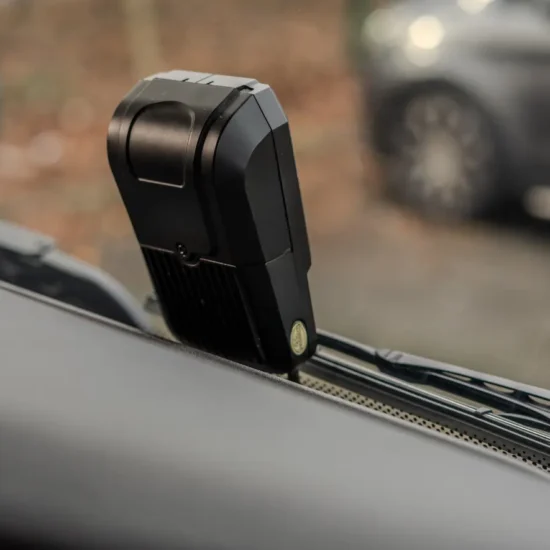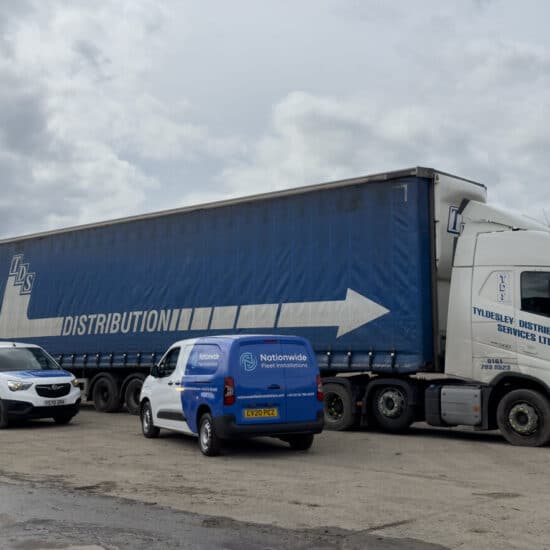Latest News
Improving Driver Behaviour with Telematics
Telematics systems are a key component for running a successful fleet. They collect a wide variety of data points from any vehicle in which they are installed, including vehicle location and activity, engine diagnostics, and more. Most fleet operators understand the inherent value of such telematics in terms of efficiency and logistics, but they also have an important role to play in monitoring and improving driver behaviour.
In this article, we are going to look at how the right telematics equipment can improve driver behaviour across your workforce and the advantages this can bring to your company.
Data Collection and Behaviour Identification
Telematics systems collect and record a vast amount of information about your fleet vehicles and their drivers. Partnered with the right software, they can provide you with important details in real time. GPS trackers allow you to pinpoint where each vehicle is at any given moment, while CAN data devices keep a record of the vehicle’s mileage, fuel consumption, speed, and rpm, among other metrics. Other vehicle equipment, such as in-cab cameras, provides even more valuable data points, specifically relating to driver behaviour on the road.
Data Analysis
With all that data at hand, it’s important that it be put to good use. Most telematics devices incorporate a central software hub where you can observe the information from individual vehicles and identify trends with specific drivers or across your fleet. This data is presented in a straightforward manner, making it easy to spot poor driver behaviour, whether that’s driving over the speed limit, excessive idling, harsh braking or turning, and much more besides.
Key Telematics Equipment
So which devices should you have installed in your fleet vehicles to gather the most extensive and useful selection of data? The particular setup will depend on the metrics you wish to measure, but these are some of the most popular devices:
In-vehicle cameras
These provide a dual purpose for any fleet operator. Their main purpose is to monitor your drivers’ behaviour while they are on the road, which can cover anything from how they are positioned in their seat to how carefully they keep an eye on the road. The footage collected by the camera can also be used in the event of a collision or other incident. With it, you can determine your driver’s behaviour at the time of the incident, which can be of great importance in the event of an insurance claim by a third party.
Satellite tracking software
All your fleet vehicles should be equipped with a GPS device that allows you to track their location accurately. Since the software can identify each vehicle’s location at any given time, it can calculate whether your vehicle is exceeding the speed limit to get from Point A to Point B. Data compiled by the National Safety Council indicated that almost a third of all road fatalities had speeding as a factor. Keeping a close eye on your driver’s speed is a key concern for any fleet operator to ensure their safety and that of other road users.
CAN Data Devices
These devices record all manner of pertinent driving data directly from the Engine Control Unit (ECU). This includes the engine’s rpm as well as speed, mileage, and fuel consumption. With this information, you can track instances of excessive idling, dangerous driving, and more.
In-cab coaching devices
While you can use the data collected from your telematics systems to identify driver needs and develop appropriate training materials for the future, in-cab coaching devices can improve driver behaviour immediately. These devices issue visual or audio warnings when a driver’s behaviour is not acceptable, allowing them the opportunity to self-correct and to be more mindful of their driving in the future.
Additional monitoring devices
Some telematics systems include devices that check whether a seatbelt is being worn or whether a mobile phone is active in the cab while the vehicle is moving. Both of these are important considerations for safe driving when behind the wheel of any fleet vehicle, particularly an HGV.
Correcting Poor Driver Behaviour
Once you are aware of trends among your drivers, it’s important that you have a plan to correct their behaviour. We’ve already discussed providing instant feedback via an in-vehicle console, but there are other approaches you can take. These might be as simple as providing a refresher course on the acceptable driving standards for your company or offering one-on-one feedback to individuals. It could also mean writing new training material to ensure that new hires are aware of your expectations from day one.
Engage With Your Drivers
Changing driver behaviour requires more than creating a list of standards for them to follow. In order to improve, any training sessions should be designed to be as constructive as possible and recognise that this is an ongoing process. Commit to the idea of continual improvement and encourage your drivers to recognise their own bad driving habits, even if they’re not ones identified by your telematics systems.
Additional Benefits
As well as making your drivers better and safer on the roads, the data gathered from the onboard telematics can improve fuel efficiency across your fleet. By encouraging more responsible driving, you can improve efficiency by up to 10%, a significant saving when applied to all your fleet vehicles. This also reduces emissions, making it easier for your company to reduce its carbon footprint and meet any environmental targets.
The Need for Accurate Installation
While telematics can provide us with all of the information detailed in this article, it’s only useful if the devices are reliable and have been fitted by professionals. A stray wire here or a loose connection there could result in inaccurate data collection and analysis. Not only will this make any operational changes less effective, but it leaves you and your company open to risk should you need to discipline your drivers on the grounds of their behaviour.
The answer to this problem is simple: make sure you get the right telematics equipment and have it installed by the right team.
Telematics Installation Services You Can Trust
Here at Nationwide Fleet Installations, we have been installing telematics equipment into commercial fleet vehicles for decades. Between us, we have fitted a wide variety of driver monitoring devices to thousands of vehicles across the country for fleets both large and small.
Every telematics installation is performed by one of our trained and qualified engineers, following an exact procedure tailored to the device in question. All devices are installed with skill and precision to ensure total accuracy. Telematics can be installed at your depot or out in the field, depending on the complexity of the equipment, and we work to your timetable to ensure vehicle downtime is kept to an absolute minimum.
Get in touch
To see what we can do for you, call Nationwide Fleet Installations today on 0161 786 6600 or email the team at info@nationwidefleetinstallations.com.
Recent News
-
Nationwide Fleet Installations Completes Acquisition of Avian Fleet
15 January, 2024 -
Demystifying Fleet Terminology: MOIS and BSIS
29 September, 2023



